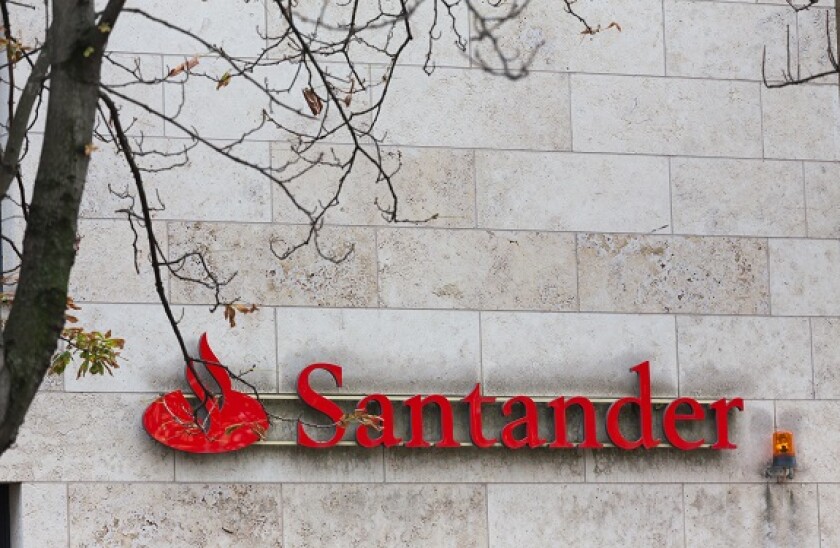GlobalCapital: How has your funding changed since the onset of the UK lockdown at the start of March?
Martin McKinney, Santander UK: We started the year with a £10bn-£12bn ($12.36bn-$14.83bn) funding need, which was not that much different from previous years. We had a strong start to the year with around £5bn of funding through senior bonds issued through the operating company, covered bonds and a senior transaction from the holding company. That was around half of the estimated 2020 funding, so it put us in a strong position. After that, the new [Term Funding Scheme with additional incentives for SMEs (TFSME)] facility was announced by the Bank of England, which means we have no requirement to return to the market over the remainder of this year.
How helpful is the Bank of England’s three year TFSME?
The funding value is approximately 10% of our customer balance sheet as a base case, with incremental funding available depending on net lending to consumers and SMEs. Given the cost compared to wholesale markets and the volume available TFSME is very helpful in this time of uncertainty and allows us to continue to lend to our customers in these difficult times.
Other than central bank funding, do you anticipate a change in the mix of the instruments that make up your market funding?
To a large extent, TFSME has replaced opco funding, but banks like us still need to complete our minimum requirement for own funds and eligible liabilities (MREL) ratios by 2022, so we’ll still be monitoring the holdco senior space. We have £2bn-£3bn to do for MREL compliance, so we will continue keep an eye on that for opportunities.
Outstanding MREL eligible debt — including excess capital and £600m of eligible debt issued in first quarter — is £4.1bn in excess of the required recapitalisation amount. Therefore, assuming a constant balance of excess capital until 2022, no further senior holdco would be required. Excluding excess capital, at current FX rates, an additional £3.6bn of eligible senior holdco would be required by 2022.
In terms of the funding mix, crisis or no crisis, the approach for a ring-fenced UK bank is relatively straightforward. We aim to meet the funding target by raising the most cost-effective funding on a weighted average basis.
As noted before, in an average funding year we have £10bn-£12bn to do. You’ve always got MREL funding to do for compliance so you can take that off, which leaves approximately £8bn-£10bn of pure funding to do. In principal, we would look to maximise the most cost-effective funding, which today is TFSME. The next is covered bonds, then RMBS and finally, opco senior.
Of course you can then drill down to the more intricate details. We can’t realistically issue four euro covered bonds, but we could issue one or two, along with dollar and sterling deals. Depending on the depth of demand in those markets, we may issue more or less RMBS. There are different market dynamics at play which will affect each individual layer of funding.
In terms of key risks that we were looking at, December 2020 was always likely to be a focus for Brexit, so we will need to wait and see developments there.
How has your balance sheet changed in Q1? Has there been growth?
We had a good first quarter with the mortgage book up by £2.4bn as the effects of Covid-19 had not really become apparent until the end of March. There were still transactions happening in March as mortgage transactions normally have some lead time to completion.
But obviously, given the current lockdown and the restrictions it imposes, there will be challenges in the mortgage sector as there are in many other sectors. The question of how quickly we see a rebound from the second quarter is going to largely depend on how quickly things can get back to normal — for example getting valuers back into houses.
What does this mean in terms of RWA growth?
In line with the balance sheet growth in customer assets in Q1 RWAs have increased by £800m. There was growth in mortgages, up £2.4bn, however, we’re now in a completely different environment, therefore the trends seen in Q1 are unlikely to be replicated in Q2.
In terms of capital we have no plans to issue additional tier one or tier two debt.
Do you have any visibility on how deferred loan payments and non-performing loans are likely to evolve?
We’ve recognised that the downside risk has increased, and you can’t shy away from that — even though there’s no official data to hand, such as unemployment and GDP data. We’ve made changes to the weights underlying various economic scenarios and added to economic sensitivities under IFRS9 post-Q1. So we’re recognising there’s a potential downside in terms of credit performance.
In terms of payment holidays, which are still performing loans, by the end of Q1 we’d granted payment holidays on 206,000 mortgages, 18,600 unsecured personal loans, and 15,000 credit card loans.
Have there been any major challenges while from working from home?
Not really. I had been working from home every Friday before the crisis emerged, so it’s been pretty seamless. We’ve used Microsoft Teams and Zoom to manage team calls in the morning and the discussions couldn’t have been any easier.

